
About UsThe Numismatic Bibliomania Society is a non-profit organization promoting numismatic literature. For more information please see our web site at coinbooks.org SubscriptionsThose wishing to become new E-Sylum subscribers (or wishing to Unsubscribe) can go to the following web page link MembershipThere is a membership application available on the web site Membership Application To join, print the application and return it with your check to the address printed on the application. Membership is only $15 to addresses in the U.S., $20 for First Class mail, and $25 elsewhere. For those without web access, write to: David M. Sundman, Secretary/TreasurerNumismatic Bibliomania
Society AsylumFor Asylum mailing address changes and other membership questions, contact David at this email address: dsundman@LittletonCoin.com SubmissionsTo submit items for publication in The E-Sylum, just Reply to this message, or write to the Editor at this address: whomren@coinlibrary.com
BUY THE BOOK BEFORE THE COINYou won't regret it! |
- WAYNE'S WORDS: THE E-SYLUM DECEMBER 20, 2009
- ADDITIONAL STACK FAMILY LIBRARY LOT ILLUSTRATIONS AVAILABLE
- LAKE BOOKS 101ST MAIL-BID SALE CATALOG AVAILABLE ONLINE
- REVIEW: FANNING NUMISMATIC LITERATURE AUCTION III
- NEW BOOK: AGRICULTURAL AND MECHANICAL SOCIETY MEDALS OF THE U.S.
- NEW BOOK: HISTORY OF OTTOMAN COINS BY DAMALI
- BOOK REVIEW: CARSON CITY MORGAN DOLLARS BY CRUM, UNGAR & OXMAN
- ANOTHER MOUNTAIN CLIMBER: RON GUTH VISITS GEORGE FREDERICK KOLBE
- DICK JOHNSON ON WALTER BREEN'S LIFE AND EDUCATION
- "THE GREATEST GENERATION" OF OBSOLETE BANKNOTE COLLECTORS
- PRESENTATION: EVOLUTION OF THE PORTRAIT MEDAL IN 16TH CENTURY FRANCE
- COMMENTS ON THE DECEMBER 13, 2009 E-SYLUM
- ANS GROVES MEDAL: PERSEVERANTIA ET DEDICATIO
- MORE ON $10,000 GOLD NOTES AND JAY PARRINO
- MORE ON THE PITTSBURG AND MEXICAN TIN MINING COMPANY MEDAL
- MYSTERIOUS CHINA CREAM PITCHER CIPHER DECIPHERED
- ON BRITISH SLANG AND THE E-SYLUM
- QUERY: MINT DIRECTOR PHOTOS SOUGHT
- SOTHEBY'S SELLS ANCIENT BUST SAID TO BE MODEL FOR BARBER'S COINAGE
- MINT PUBLISHES RULE CLARIFICATION FOLLOWING WSJ'S ARTICLE ON COIN SCAM
- JACOB PERKINS BUILDING RESTORATION UPDATE
- "GREAT TRAIN ROBBERY" MOVIE RIGHTS SOLD
- DAVID LANGE'S COIN FOLDER, ALBUM AND BOARD REFERENCE COLLECTION
- LIBRARY BOOK 99 YEARS OVERDUE
- RAPSUS HIGHLIGHTS NOTABLE ENGRAVED U.S. SILVER DOLLARS
- BALDWINS TO AUCTION MICHAEL HALL COLLECTION OF RENAISSANCE MEDALS
- BRITAIN TO END CHECK WRITING AFTER 300 YEARS
- CHINESE COUNTERFEITS FIND THEIR WAY INTO DONATION KETTLE
- WAYNE'S NUMISMATIC DIARY FOR DECEMBER 20, 2009
- MERRY CHRISTMAS!
- FEATURED WEB SITE: COINS & CURRENCY IN COLONIAL AMERICA EXHIBIT
WAYNE'S WORDS: THE E-SYLUM DECEMBER 20, 2009

Among our new subscribers this week are Jeff Shevlin and John Raymond, courtesy of Dave Perkins, Sam Spiegel, Harvey G. Stack, and Chad Williford. Welcome aboard! We now have 1,286 subscribers.
This week we open with news from three numismatic literature dealers, two new book announcements and one book review. Hmmm - there's a "Twelve Days of Book Nuts" song in there somewhere.
Topics this week include the evolution of the portrait medal in France, an ancient bust thought to be the model for the Liberty Nickel design, and an auction of Renaissance medals, and the coming end of checks in Great Britain.
To learn about the library book overdue by 99 years , read on.
Wayne Homren
Numismatic Bibliomania Society
ADDITIONAL STACK FAMILY LIBRARY LOT ILLUSTRATIONS AVAILABLE
Numismatic literature dealer George Kolbe writes:
Big E readers might like to know that color illustrations of over 100 additional lots in the January 9, 2010 auction sale of the Stack Family Library are available at: www.the-saleroom.com/georgefrederickkolbe
Also, for the first time, live Internet bidding will be available at a Kolbe auction via the above link.
Below are a couple sample lot illustrations. -Editor

Lot 99: Levick, Joseph N. T. Catalogue of American Coins, Medals, Tokens, Paper Money, Etc., From J. N. T. Levick’s cabinet. New York: Bangs, Merwin & Co., W. H. Arthur, Printer and stationer, April 27-29, 1865.
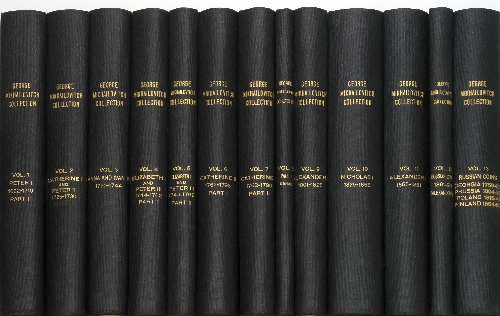
Lot 395: Georgii Mikhailovich, Grand Duke. Moneti Tzarstvovaniya Imperatora Petra I Do Alek-Sandra III/Coins Of The Reign Of Emperor Peter I To Alexander III. St. Petersburg, 1888-1914. Bound in thirteen numbered volumes
LAKE BOOKS 101ST MAIL-BID SALE CATALOG AVAILABLE ONLINE
Lake Books' 101st mail-bid sale of numismatic literature is now available for viewing on its web site at: www.lakebooks.com/.
The sale features selections from the library of Fred Iskra, a prominent member of Early American Coppers, Inc. Other consignments in the sale cover the full numismatic experience with reference books on World and Ancient coinage, Tokens and Medals, Paper Money and many other subjects.
The 396-lot sale has a closing date of 5:00 PM (EST) on January 19, 2010 and bids may be placed via email, fax, telephone or standard mail until that time. Please note that we acknowledge receipt of emailed bids via return email. In order to acknowledge receipt of faxes, please include an email address or a telephone number to call.
Good luck with your bidding and have a Happy Holidays and a bountiful New Year.
To read the catalog, see: www.lakebooks.com/current.html
REVIEW: FANNING NUMISMATIC LITERATURE AUCTION III
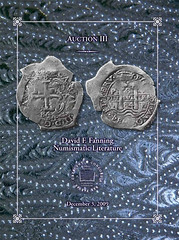 I want to thank you for bringing my attention to the David Fanning auction of December 3rd, 2009. I was able to obtain a bidder card after contacting Mr. Fanning and he was gracious enough to accept my credentials on short notice. This was a new experience for me because of the format. There are no fancy computer tools and widgets to confound anybody. The auction process is streamlined, all that is required is for one to send an email or call.
I want to thank you for bringing my attention to the David Fanning auction of December 3rd, 2009. I was able to obtain a bidder card after contacting Mr. Fanning and he was gracious enough to accept my credentials on short notice. This was a new experience for me because of the format. There are no fancy computer tools and widgets to confound anybody. The auction process is streamlined, all that is required is for one to send an email or call.
I sent an email, thinking rightly that Mr. Fanning would be very busy. In the email, you write down the item lot number, enter your opening bid, the maximum you are willing to part with for an item(s) and viola. Then after a few days have gone by you have either won an item or not. Very efficient and clean. The days went by and I received an email from David with the invoice attached. I had bid and won Lot 435: Error Trends Coin Magazine Vols. 4 and 5 with The NECA Errorscope Oct 72 thru July 73. I really can’t wait to see some of the old advertisements, and read about the latest finds; back in the day as it were.
The following is my two cents on what I think are some of the more interesting aspects of the auction. First of all my only regret is that I did not bid on more of the manuscripts that were available. It is Christmas time and money is in short supply everywhere, or so I hear. It is definitely so in the LaPlante household.
Of course the major highlights of the auction and the examples that garnered the most attention sold well as follows:
Lot 607: A complete, 21-volume set of hardcover Stack’s Ford catalogues brought $2500
Lot 375: A 1795 Supplementary Mint Act hand-signed by Secretary of State Edmund Randolph brought $2400
Lot 409: John J. Ford’s set of inscribed Red Books (1960-1998) brought $1600
Lot 573: The rare 1917 ANA sale, hand-signed by Wayte Raymond, brought $1300 on a $500 estimate amid heavy bidding
What I believe to be one of the great deals of the auction was the sale of Lot 205: Royal Cortissoz beautiful work about Augustus St. Gaudens, a First Edition in near fine condition which sold for $50.00. This is one that slipped past me and I wish to gosh I had bid on it.
Lot 221: an 1885 Evans did not sell, granted it is a paper-bound edition but rare in its own right. There were many versions and years of Evans and most sold away at the hammer. Why this first did not go is indeed a mystery. Lots 354 and 355 a 1965 and 1976 volume of Penny Whimsy also did not sell and again I am at a loss to explain the vagaries of auction attentiveness as the suggested estimates were certainly affordable.
Lot 167: Q. David Bowers’ American Coin Treasures and Hoards and Caches of Other American Numismatic Items sold for $90.00 and the going rate on this volume retails between $125 and $220, a great buy from this auction bidder's view.
The auction was a success and there was an abundance of important works up for bid and even so given the state of the economy. I emailed David about the auction and he was kind enough to offer his take on the event, he said, "Although the weak economy can be seen in the fair-to-middling results for works that are either regularly encountered or of limited audience, rare and especially desirable works continue to bring strong prices."
Mr. Fanning continues to bring rare and unique numismatic works to the fore. David Fanning auctions can be found at www.fanningbooks.com and he publishes an informative online newsletter called The Bookshelf which offers additional numismatic volumes to fill your library.
By the way, why do we "put our two cents in"... but the going rate is only a "penny for your thoughts"? Where's that extra penny going? And speaking of imponderables, how is it that we put men on the moon before we figured out it would be a good idea to put wheels on luggage? -Editor
NEW BOOK: AGRICULTURAL AND MECHANICAL SOCIETY MEDALS OF THE U.S.
There's a new book out - Agricultural and Mechanical Society Medals of the United States, 211 pages, soft-bound, by longtime collector Andrew Harkness of Pittsfield NY. There are two versions: one at $85 with color plates and one at $35 with black and white plates on cheaper paper. The book documents hundreds of bronze, white metal, silver and gold medals in the author's finest-known collection, many struck by the U.S. Mint and also by state and county societies going back to the early 1800's.
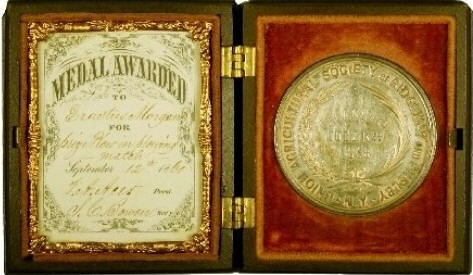
It's published at and only available thru www.LuLu.com. Just announced this week, only Joe Levine of Presidential Coin & Antique Company (PCAC) has one (he received a complimentary copy). One is coming to me, ordered yesterday at $85 + $3.99 postage.
I know what author/collector Andy Harkness (75 yrs old) owns and I expect the book to be impressive, although with only a preface and lacking any individual notes for each medal, it's more of a magnificent published inventory of what Andy owns.
Agricultural and Mechanical Society medals are a popular and highly attractive series of medals - see the "AM" section of Robert W. Julian's U.S. Mint Medals 1792-1892. Joe Levine often features this subject in his annual auctions and the last auction - perhaps 3 yrs ago - was a major collection "rip-roaring" with individual prices into the multi-thousands.
Just yesterday, I acquired privately a 4oz 1873 cased Agricultural medal in .900 fine gold - a medal not supposed to exist according to U.S. Mint records. I'm still floating on air. Also see John Sallay's website www.neocollect.com for over 100 Agricultural & Mechanical Society medals I own to indicate just how appealing these medals are. And Andy owns many medals I do not own.
For more information at Lulu.com, see:
Agricultural and Mechanical Society Award Medals of The United States (Color)
(http://www.lulu.com/product/paperback/agricultural-and-mechanical
-society-award-medals-of-the-united-states-%28color%29/6150204)
NEW BOOK: HISTORY OF OTTOMAN COINS BY DAMALI
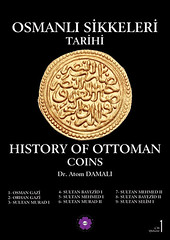 We would like to introduce our new publication "HISTORY OF OTTOMAN COINS" that will be completed in 8 volumes.
The first volume covers Sultans from OSMAN I to SELIM I and the second volume is SULEYMAN I only.
Chronological events are listed for each Sultan, and
a short description of historical events is summarized.
In the first section of volume 1:
We would like to introduce our new publication "HISTORY OF OTTOMAN COINS" that will be completed in 8 volumes.
The first volume covers Sultans from OSMAN I to SELIM I and the second volume is SULEYMAN I only.
Chronological events are listed for each Sultan, and
a short description of historical events is summarized.
In the first section of volume 1:
- The 124 Ottoman mints are examined at length
- Coin production techniques are described in detail
- Coding and classification of Ottoman coins are established
- Inscriptions on Ottoman coins are listed in Ottoman Turkish, Turkish and English
- Variations of weight of Ottoman coins are analysed
- Important milestones in Ottoman coin production is researched
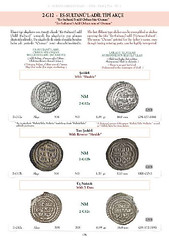 Heading : History of Ottoman Coins
Heading : History of Ottoman Coins
Author : Dr. Atom Damalý
Language : Turkish and English in the same book
Pages : 460 pages all in color
Published By : Nilüfer Damalý Education, Culture and Environment Foundation
Size : 210 x 297 cm
Hard cover
The price of the book is 110 USD. The book can be procured from the web site of the foundation. at a cost of 160 USD Europe and / or USA delivery included. The payment can be made thru PAYPAL. All revenue from the sale of the book is donated to NILUFER Foundation’s "vision impaired university students" Project.
For more information, see: niluferdamalivakfi.org/eng/gallery.asp?ID=36&CID=&PID=439&do=showdetails
BOOK REVIEW: CARSON CITY MORGAN DOLLARS BY CRUM, UNGAR & OXMAN
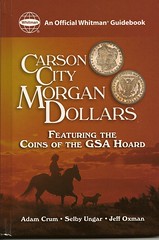 Another in a long line of "An Official Whitman Guidebook" references is the recently released, "Carson City Morgan Dollars – Featuring The Coins Of The GSA Hoard." It is authored by Adam Crum, Selby Ungar & Jeff Oxman, three well known numismatists that specialize in Silver Dollars. This hard bound reference contains 124 pages and is well illustrated with color plates.
Another in a long line of "An Official Whitman Guidebook" references is the recently released, "Carson City Morgan Dollars – Featuring The Coins Of The GSA Hoard." It is authored by Adam Crum, Selby Ungar & Jeff Oxman, three well known numismatists that specialize in Silver Dollars. This hard bound reference contains 124 pages and is well illustrated with color plates.
The specialized reference covers the subject of Carson City Dollars completely and in a very easy and simple way to read. The introduction, which covers 33 pages, gives a brief history of the Carson City Mint and the part the General Services Administration played with its sale of its CC dollar hoard. The Redfield hoard is also discussed.
We especially liked the information regarding the official audit of the Treasury Building in Washington, D.C. where they discovered three million U. S. Silver Dollars which were all struck at the Carson City Mint. This hoard with its many rare dated CC Dollars would eventually help collectors build collections; that prior to the sale of these hoards were almost impossible to complete. The three authors also gave an interesting and informative account in regards to the California gold rush.
The book starts with a Collector’s Checklist which lists CC dollars along with their VAM numbers. Each coin has collector highlights and notes on that piece. This provides many insights about each date. Close-up pictures of the diagnostics for the varieties are shown. Estimated values are given in Mint State grades with proof-like (PL) and deep-mirror proof-like (DMPL) listed separately. Both GSA holders and non-GSA holders are valued separately.
With a "Condition Census" the book provides the most reasonable acquisition grade for the average collector. The authors have carefully analyzed each date and variety for collectors to study. This book is an important addition to the information on Carson City Morgan Dollars and belongs in every Morgan dollar collector’s library.
This fine reference will be released by Whitman in December, 2010, and it will retail for $24.95. They can be contacted at: Whitman Publishing, LLC, 3103 Clairmont Road, Suite B, Atlanta, GA 30329, Phone (800) 546 - 2995 or Email: info@whitmanbooks.com
An interesting numismatic mystery discussed in the book is the lone 1882-CC specimen form the GSA hoard. The authors are unaware of its whereabouts - it would be an interesting numismatic find if it turns up in packaging. -Editor
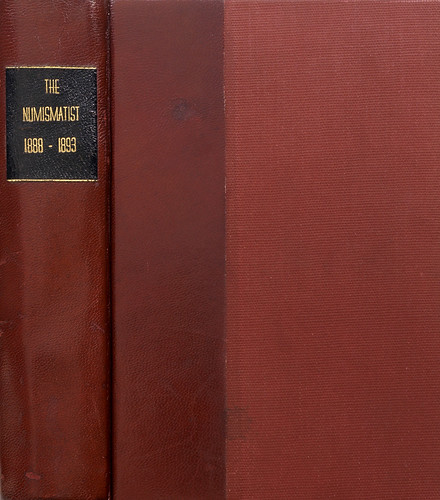
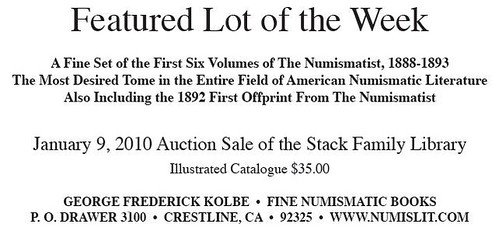
ANOTHER MOUNTAIN CLIMBER: RON GUTH VISITS GEORGE FREDERICK KOLBE
Tuesday, December 15, I made the trek to George Kolbe's house to take advantage of the last day of "local" lot viewing for his upcoming sale of the Stack's Family library. I live in San Diego, and the only way to George's place is up the dreaded I-15 corridor, a ribbon of concrete that deserves its own special level in Dante's hell. Whoever said "It's the journey, not the destination" has never enjoyed California freeways. There is no right time to drive The 15, but there are plenty of wrong times, so I left my house at 6 a.m. in the hopes of minimizing the eventual slow time.
It actually worked out pretty well and I was able to cruise along at 70-80 miles per hour until I hit Perris, where I stopped for a leisurely breakfast while the poor souls condemned to the highway hustled to their jobs at a blistering 5 mph. Even after an hour, traffic speeds varied from slow to not fast, but I eventually slid off the freeway and began the trek up the mountain to George's lair.
The San Bernardino mountains rise right out of the desert at a pretty steep grade and my ears were soon a-popping as I drove through the San Bernardino National Forest on my way to Crestline. The road up the mountain is twisty and turny, so a lone driver has to choose between staying on the road or enjoying the unfolding vistas. Crestline is both the name of the town and an apt description for the locale; it is literally built on the line of the crest of the mountain. The ridge of the mountain is where the trees are, and George's house is nestled right among them. Traces of snow were still visible from last week's winter storm. So much for the journey part of my story.
George greeted me at the door and invited me into his home. His son-in-law was busy photographing books in the living room, and wife Linda greeted me in the kitchen. George had already pulled some lots for me, but before the serious business began, he pulled me onto the outside deck where we exchanged pleasantries and enjoyed one of the best views I've seen from a California home. I'm not talking about a peek, or a view; I'm talking about a stunning panoramic vista that stretches all the way to the island of Catalina, clearly visible some 60 miles away. It's breathtaking.
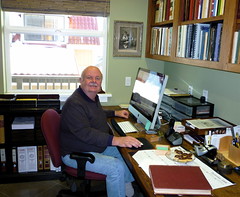 George took me on a mini-tour of his home, showing me his office/library and the many built-in bookshelves where the written word is lovingly presented. What struck me most was how organized George is. He is sharp...very sharp.
George took me on a mini-tour of his home, showing me his office/library and the many built-in bookshelves where the written word is lovingly presented. What struck me most was how organized George is. He is sharp...very sharp.
I won't tip my hand to as to which auction lots were viewed, but suffice it to say that the destination part of my story was worth the journey. I saw some incredible numismatic treasures, in a beautiful home custom-built for a bibliophile/book-seller, and I enjoyed the hospitality of a gentleman sans pareil.
Thank you, George, for making the trip worthwhile.
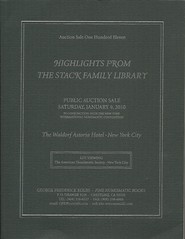
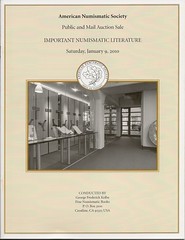
David Lange writes:
I'm just starting to work my way through George's great catalog of the Stack Family Library sale, and I was intrigued by the vintage photos that appear in the introduction. I spotted one error in dating which probably matters little, but I'm a stickler for details. The staff photo at the top of page 10 is dated to 1955-57, but the women's style of hair and clothing puts it in the 1963-64 period.
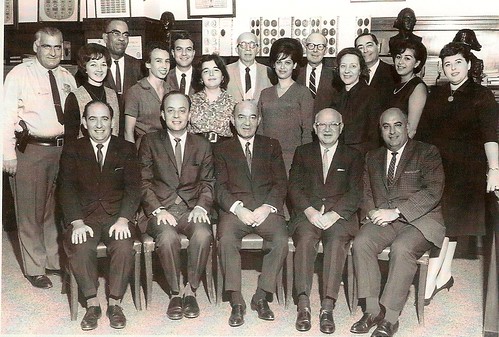
Arnold Miniman writes:
On Monday I received George Kolbe's auction catalog "Highlights from the Stack Family Library". After reading through the catalog it was obvious that the endeavor was a labor of love for George. Some of Michael Hodder's comments have already been reproduced in The E-Sylum, and I thoroughly enjoyed reading them as well as the comments by Bill Anton, Jr., and P. Scott Rubin. There is a lot of family history discussed, and I learned things about the Stacks that were previously unknown.
It all made me wonder... what happened? Just a few short years ago the Stacks were conducting the historic John Ford sales and, now, after seventy years, there are no Stacks left at the firm, and their library is being disseminated. People have heard hears rumors about the firm selling a principal interest to Whitman Publishing, and, of course, there was the merger with Dave Bowers' firm, American Numismatic Rarities. But there must be someone who can shed some light on the end of this era in numismatics. Maybe Larry Stack will write a book about it someday.
DICK JOHNSON ON WALTER BREEN'S LIFE AND EDUCATION
Michael E. Marotta is one hundred percent right in his statement in last week's E-Sylum that transcripts of student's records are not public information. I learned the same was true fifty years ago.
I first met Walter Breen at the ANA convention in New York City 1952. Since I was in the service stationed in Washington DC I traveled to coin conventions on the East Coast. Our paths crossed many times. Also Walter came to DC often to research at the National Archives. We met frequently. I had a car and would drive him around when I was off duty.
We talked often of his education, his mental ability, his origin, his military service, his interest in classical music and a wide discussion of numismatic topics. I learned he did accomplish a four-year college degree at Johns Hopkins University in 18 months by the college's accelerated academic program that if you took the final exam and passed it you got credit for the course. He did extensive and concentrated study to pass these tests during that period. He said the stress was profound.
At this college he was taken under the guidance of a professor there, who had had a son who had an unbelievable high IQ. He committed suicide at age 8 or 9 because he "did not have anyone to talk to." He found no one who could converse with him on his intellectual level. The father had great remorse; perhaps he saw a possible a similar condition in Walter. (Which was somewhat true as Walter had infrequent thoughts of suicide.)
Walter estimated his own IQ was "the boiling point of water" -- 212. It is impossible to measure any IQ this high as so few people have such a rarified intelligence. He was a member of MENSA (where you must have an IQ in the 98th percentile or higher) and was active in their meetings. He DID find people he could talk to there.
Walter was a foundling. He never learned who his parents were. He was taken in by a step-mother in San Antonio Texas, who was very harsh with him. He was bright but not brilliant as a child. He could not stand her, so in San Antonio he enlisted in the Air Force to get out from her control. He also could not stand the regimentation of the military and during basic training had a mental breakdown. He developed true amnesia.
Walter was given a medical discharge from the Air Force and sent to VA hospitals. He spent months in VA hospitals attempting to regain his memory, but he had to learn everything all over again. He did this so quickly he developed his intellectual ability, a rapid learning capacity, and, ultimately, a high intellect. At the VA hospital they encourage taking correspondence courses, which he did and this was the basis for his wide knowledge thereafter.
So he was able to enter college without a high school degree. About 1953 I tried to research Walter's college activity, went to Johns Hopkins register's office and asked to see Walter Breen's records. "Sorry, those are only released to the person themselves, or their immediate family." My protests, "Walter has no family, I am a friend writing his biography," fell on deaf ears. No records released.
Walter did tell his story and it was published in a book. His account occupied a full chapter in The Adopted Break Silence, by Jean M. Paton published in 1954. The book relates accounts of how forty men and women searched for their natural parents. Walter mentioned he was a "professional numismatist," gave the story of his amnesia recovery, but never learned who were his biological parents.
He hated his step-mother and she was the stumbling block to his learning anything of his origin. While he was in the VA hospital trying to regain his memory, however, she did bring him some of his childhood things. Among them was a book on coins. He picked up on this, and that is how he became interested in numismatics again that developed into a life-long obsession.
To read the earlier E-Sylum article, see: MORE ON WALTER BREEN'S EDUCATION (www.coinbooks.org/esylum_v12n50a13.html)
"THE GREATEST GENERATION" OF OBSOLETE BANKNOTE COLLECTORS
After speaking with a few other collectors regarding James Curto and some of his contemporaries of the 1960s & '70s I realize how fortunate I have been to become involved with obsolete banknote collecting at that time. So many of what I now call "The Greatest Generation" of banknote collectors were contributing to the general knowledge of this field and nurturing some neophytes like me to become involved. These men and women truly cared for the hobby and wanted to expound the ideals they shared regarding it. They were mostly collectors first and dealers next when the time to reduce their collections had arrived.
Men like George Wait, Richard Hoober, Ralph Goldstone, and Jim Curto were all at the top of their game 40 years ago when I started to collect. What impressed me and set these collectors apart was the attention they gave to me as a beginning obsolete banknote collector and the importance of ferreting out information regarding these notes.
Twice I visited George Wait at home and was offered the pick of his banknote litter which he said, could be paid for later. He trustingly let me go home with his collection and to send quarterly payments when I could. He once gave me a short tour of Bloomfield, NJ in order to point out the house that "Yogi" Berra lived in.
Soft spoken Dick Hoober always supplied information on the notes he offered for sale and was always appreciative of information or trades coming his way. A sale wasn't complete until we talked back and forth about the design, vignettes, etc. None of our mailings were done by Insured Express, Priority Mail, Fedex or other "-positively overnight" delivery choices. Three day, uninsured, plain envelope and no Mylar holder was the mailing method du jur. There was never any reason to claim mail fraud. We met only once or twice at conventions, somewhere. In person he was even more of a gentleman than I previously had imagined.
Ralph Goldstone took me to his vault in the bank below his office and said "take home what ever you like and get back to me later". This was on the first day I met him. Was business usually conducted like this?
My experience with Jim Curto, another true gentleman, is related in a previous issue of The E-Sylum. These were the days when you had a hard time finding a dealer at a coin show who even knew what broken banknotes were. After showing an example to one dealer he asked, "what's broken about it"?
I'll bet other collectors have had similar experiences with "the greatest generation" of banknote collectors. Maybe they would like to share those memories with us.
THE BOOK BAZARRE
PRESENTATION: EVOLUTION OF THE PORTRAIT MEDAL IN 16TH CENTURY FRANCE
The Societe americaine pour l'Etude de la Numismatique francaise (SAENF) will meet for the 38th year at the 2010 New York International Numismatic Convention. Our featured speaker will be Dr. Stephen K. Scher, renowned Renaissance medal collector, scholar, and academic. He will present an illustrated talk entitled, "The Evolution of the Portrait Medal in Sixteenth Century France".
The meeting will take place at 2:00pm, Saturday, January 9, in the Sutton Suite on the 18th floor of the Waldorf Astoria Hotel in New York City. All collectors, curators, and dealers with an interest in the subject are invited to attend.
COMMENTS ON THE DECEMBER 13, 2009 E-SYLUM
Q. David Bowers writes:
Nice diverse, interesting issue!
It’s funny how it manages to come together each week. I often start off thinking I might not have enough good content, and then one neat thing after another turns up in my mailbox. This week is no exception. -Editor
To read last week's complete issue, see: Volume 12, Number 50, December 13, 2009 (www.coinbooks.org/club_nbs_esylum_v12n50.html)
ANS GROVES MEDAL: PERSEVERANTIA ET DEDICATIO
Joe Boling writes:
What's that medal shown with the ANS library catalog naming contest announcement - Perseverantia et Dedicatio? I've not seen that medal before.
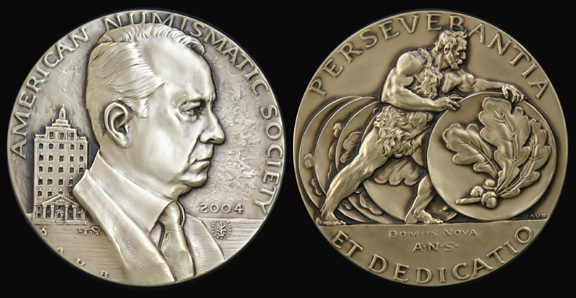
This medal commemorates the Society's move from its former home at Audubon Terrace to downtown Manhattan. Designed by Eugene Daub, it was struck in bronze by the Medallic Art Company.
To order the Groves medal, see: www.numismatics.org/Store/Grovesmedal
MORE ON $10,000 GOLD NOTES AND JAY PARRINO
Joe Boling writes:
Regarding the million dollars in 10,000 notes, if the original display was composed of series 1928 notes, then they were gold notes - the gold redemption clause was negated by FDR's recall of gold, but the notes promised payment in gold.
Kerry Wetterstrom, Editor/Publisher of The Celator writes:
Just a follow-up to the thread about Jay Parrino. He is now a major dealer in certified (which includes slabbing) U.S. stamps. Just as in coins, he deals in the very best. He is a regular advertiser in Linn's Stamp News, sister publication of Coin World.
To read the earlier E-Sylum article, see: MORE ON COIN DEALER JAY PARRINO (www.coinbooks.org/esylum_v12n50a12.html)
MORE ON THE PITTSBURG AND MEXICAN TIN MINING COMPANY MEDAL


Jonathan Brecher writes:
I have a database of over 20,000 auction appearances of So-Called Dollars, and it includes 8 appearances of HK-149 (the most recent pair in the 12/2008 Holabird-Kagin sale).
John Raymond has a different list of auction appearances and also has 8 appearances of HK-149. Since our two databases cover slightly different sources, I'd guess there are 10-12 distinct appearances recorded between us. John Raymond's list is on the web at http://www.socalleddollar.com/study2ndED.html. Mine is not published.
FWIW, 8 appearances is about 50th percentile in terms of rarity in my database. That is, about half of the So-Called Dollars (listed by HK number) have fewer than 8 appearances in my database, and about half have more than 8 appearances.
Dave Perkins writes:
I have a specimen of this medal. My specimen was once owned by Harold E. Hibler, one of the authors of the Hibler & Kappen book, So-Called Dollars. Hal Hibler sold it to Mr. and Mrs. Alfred J. Ostheimer in the 1960s. It remained in the Ostheimer Collection until 2005 when I purchased their collection of over 700 So-Called Dollars, including this piece, from Mrs. Ostheimer.
The collection is kept in the bank so I don't have this specimen available as I write. I graded this specimen MS 60 (per my notes).
John Raymond hosts a wonderful website titled "So-Called Dollars." Included on the website is a study noting all of the specimens he has "tallied" or tracked over the years for each H&K number. Per the website, the original tally included So-Called Dollars "sold through various token and medal mail bid dealers and auctioneers from 1975 through the year 2000 (around the advent of e-bay)….including Presidential Coin and Antique catalogs after the year 2000, Stack's, B&M, e-bay, ANS listings, Tony Swicer's 1992 sale [one of the most complete if not the most complete collections ever sold per my research], a pile of Christian and Stone sales catalogs, a number of published book references, and other sources." More details can be found on the website: www.socalleddollar.com/ Perhaps you can make this website your "Featured Web Page" in the next issue of The E-Sylum.
For H&K 149 Raymond notes only 8 appearances in the last 35 years or so: 3 in VF or lower grades; 3 in EF grades; 2 in AU grades and none in Uncirculated condition. One of the 8 is noted as being "holed," most likely at 12:00. Three of these appearances were in Presidential Coin & Antique sales per his tally - the holed specimen and 2 others graded EF.
Ed Krivoniak noted in the last issue of The E-Sylum that he has "located six specimens in Pittsburgh." I've shared what I've learned over the last 4-5 years. I am curious as to how and where Ed located his six specimens, and the grades.
Ed Krivoniak writes:
The pictured specimen is my own which I graded as AU. It was purchased from the Don Miller estate in the 1990's. The other five specimens are in private hands in Pittsburgh. I have seen three of the five. The grades are 1- AU and 2-XF/AU. The two that I haven't seen are supposed to be better than VF. I have not been able to check with the Carnegie Museum since we have lost communication with them. One of the owners just told me he acquired a second specimen, bringing the known population to 18-20 pieces. I'm still going with an estimate that there were only 25-50 made originally.
Dave Perkins of Centennial, CO writes:
I mentioned The E-Sylum piece on H&K 149 to Jeff Shevlin, a specialist collector and dealer in the So-Called Dollars. I also forwarded the copy of The E-Sylum to him.
Jeff wrote in an e-mail to me dated December 15, 2009, "Regarding HK 149, I have one in VF condition. I cataloged the Weber piece and had it was slabbed by NGC as MS 64 PL." The Weber piece was sold with Weber's collection in the Holabird-Kagin Americana Bill Weber So Called Dollars Auction, December 2, 2008, Lot 1006 where it realized $920.00. Jeff cataloged this lot, noting "This is the finest known piece, graded by NGC MS64 Prooflike. Certainly one the nicest examples in existence, this piece exhibits Prooflike reflective surfaces." The Weber Specimen was plated in the sale catalog, both obverse and reverse.
To read the earlier E-Sylum article, see: QUERY: PITTSBURG AND MEXICAN TIN MINING COMPANY MEDAL (www.coinbooks.org/esylum_v12n50a15.html)
MYSTERIOUS CHINA CREAM PITCHER CIPHER DECIPHERED
Last week, Anne E. Bentley of the Massachusetts Historical Society asked:
I'm wondering if any of your readers have come across this cipher in their collecting. Although this example is a china cream pitcher, the logo seems to resemble something one would find on a token or medal.
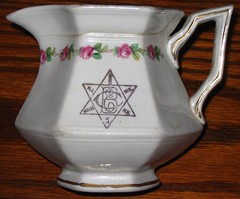
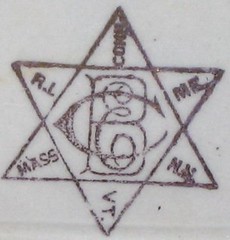
Kay O. Freeman writes:
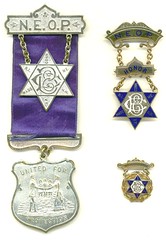 It is associated with New England Order of Protection (NEOP). Their motto was "Equity, Benevolence and Charity."
Thus, that is what "EBC" monogram stands for.
NEOP started November 11, 1887 and Supreme Lodge was in Boston.
It is associated with New England Order of Protection (NEOP). Their motto was "Equity, Benevolence and Charity."
Thus, that is what "EBC" monogram stands for.
NEOP started November 11, 1887 and Supreme Lodge was in Boston.

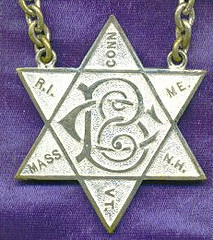
For more information, see: NEW ENGLAND ORDER OF PROTECTION (www.phoenixmasonry.org/masonicmuseum/fraternalism/neop.htm)
Anne writes:
"Trust Kay to come up with the answer!!! This made my day much much better. Kay, you really are a marvel."
To read the earlier E-Sylum article, see: QUERY: WHAT IS THIS MYSTERIOUS CHINA CREAM PITCHER CIPHER? (www.coinbooks.org/esylum_v12n50a14.html)
ON BRITISH SLANG AND THE E-SYLUM
A British coin dealer writes:I laughed out loud when I reached the end of your article about the meaning of "pukka". Perhaps you don't quite realise the force the "W word" has in England, and I suggest it's the first time it's appeared in a learned numismatic journal (online or otherwise)! It would probably be the equivalent of accusing someone of having a very close relationship with their mother in American slang.
QUERY: MINT DIRECTOR PHOTOS SOUGHT
Mark Borckardt writes:
I am looking for photos of Thomas McKean Pettit, Mint director from April to May 1853; William Millward, Mint director from October 1866 to April 1867, and Robert E. Preston, Mint director from November 1893 to February 1898.
SOTHEBY'S SELLS ANCIENT BUST SAID TO BE MODEL FOR BARBER'S COINAGE
LOT 38 PROPERTY FROM THE STACK FAMILY COLLECTION A MONUMENTAL MARBLE HEAD OF A GODDESS, ROMAN IMPERIAL, CIRCA 1 ST CENTURY A.D. probably Aphrodite, Hera, or an Empress in the guise of a goddess, her centrally parted wavy hair bound in a laurel wreath and surmounted by a stephane decorated in relief with alternating rosettes and lotus buds, the bust and back of the head restored in marble.
Height with bust 19 1/2 in. ESTIMATE 20,000 - 30,000 USD
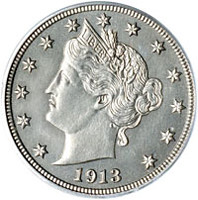
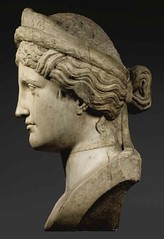
Although Theodore Roosevelt is famous for having railed against the "atrocious hideousness" of United States coin designs, and commissioned sculptor Augustus Saint-Gaudens to create coinage "worthy of the ancients," in fact United States coin designers had long relied on antique prototypes. The specific sources for virtually all these earlier efforts, however, have been lost.
In 1881, Charles E. Barber, the Chief Engraver of the United States Mint, began to design a series of pattern coins for subsidiary coinage, one cent to five cents; all bore the same classically inspired head of Liberty. The design for the five cent denomination was refined over the next year, and was finally adopted for circulation in 1883. It became known as the "Liberty head nickel" or "Barber nickel" after its designer. Millions were struck for circulation through 1912.
The inspiration for Barber's head of Liberty appears to have been derived from the present bust. Cornelius Vermeule in Numismatic Art in America (1971) noted the increased reliance on Roman cult-statues for inspiration by engravers since 1849. He further observed that Barber's "diademed and wreathed head of Liberty on the obverse was modeled almost verbatim from a Greco-Roman head of Juno or a major personification...." and that "the very head said to have been used as the model for this nickel...is the centerpiece in the entrance salon of the premises of Messrs. Stack...."
Vermeule continued that the head, "a Greco-Roman restyling of a Greek head of the fourth century B.C." had been on display at the Philadelphia Academy of Art from the Civil War until the First World War, and that is was here that Barber, along with other Mint artists found their inspiration and "turned its full, grave if not heavy profile into designs for the coinage."
The head later passed through a number of private collections, and was at one time in the possession of the renowned Philadelphia coin dealers S.H. and H. Chapman whose partnership lasted from 1878 to 1906. Henry Chapman, the younger of the two brothers was well-acquainted with Barber. Chapman died in 1935, and the head is believed to have come into the Stack family's possession shortly thereafter.
Although Barber took ample license in his rendering, a comparison of Barber's nickel with the head's profile faithfully replicates the divinity's slightly curving nose (from restoration). Vermeule summed up their relationship as "what some modern critics would consider a dull, academic standard of classical divinity in visual form became a keystone in the redesigned denominations of American coinage."
To read the complete sale catalog, see: Egyptian, Classical, and Western Asiatic Antiquities New York , Thu, 10 Dec 09, 2:00 PM, N08603 (catalogue.sothebys.com/auctions/N08603/pdf_lowres/N08603-catalogue.pdf)
MINT PUBLISHES RULE CLARIFICATION FOLLOWING WSJ'S ARTICLE ON COIN SCAM
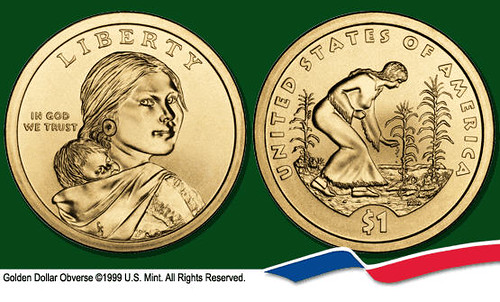
Native American $1 Coins have been made available again on the United States Mint's Circulating $1 Coin Direct Ship Web site. These circulation-grade $1 coins are available in boxes of ten 25-coin rolls. There is no charge for shipping and handling.
The intended purpose of the Circulating $1 Coin Direct Ship Program is to make $1 Coins readily available to the public, at no additional cost, so they can be easily introduced into circulation -- particularly by using them for retail transactions, vending, and mass transit. $1 Coins are 100% recyclable, last for decades and save the Nation money. (Please note: The immediate bank deposit of $1 Coins ordered through this Program does not result in their introduction into circulation and, therefore, does not comply with the intended purpose of the Program.) Quantities are limited.
To read the earlier E-Sylum article, see: WALL STREET JOURNAL REPORTS U.S. MINT CREDIT CARD REWARD SCAM (www.coinbooks.org/esylum_v12n50a18.html)
THE BOOK BAZARRE
JACOB PERKINS BUILDING RESTORATION UPDATE
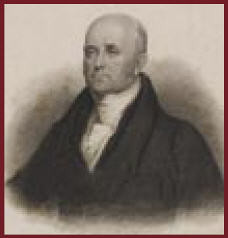 Construction is underway for the restoration of the Jacob Perkins Printing and Engraving plant purchased by the Historical Society of Old Newbury. In 2007 The Newburyport Five Cents Savings Charitable Foundation granted $200,000 toward the purchase of the historic brick building located on Fruit Street in Newburyport.
Construction is underway for the restoration of the Jacob Perkins Printing and Engraving plant purchased by the Historical Society of Old Newbury. In 2007 The Newburyport Five Cents Savings Charitable Foundation granted $200,000 toward the purchase of the historic brick building located on Fruit Street in Newburyport.
Upon restoration completion the engraving plant will serve as a museum to commemorate Jacob Perkins’ inventions, which contributed significantly to the growth of 19th century America. He influenced the early national banking industry with his invention of a coin press machine and one which produced counterfeit-proof bank notes.
Perkins developed a powerful fire fighting pump, which according to historians, may have lessened the devastation of the 1811 Newburyport fi re, had selectmen voted to purchase it. He improved the operation of Naval ships during the War of 1812. He developed a steam engine, a refrigerator and a nail-making machine.
The Historical Society of Old Newbury plans to celebrate the completion of the Perkins building in May of 2010. Soon thereafter, museum visitors can learn about several additional inventions by brilliant native son Jacob Perkins (1766-1849).
To read the complete article, see page 3: BANK NOTES: A newsletter for customers of The Newburyport Five Cents Savings Bank (www.newburyportbank.com/home/fiFiles/static/documents/aboutus_Newsletter.pdf)
"GREAT TRAIN ROBBERY" MOVIE RIGHTS SOLD
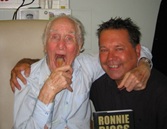 Ronnie Biggs’ biographer is set to profit from his friend’s crimes after agreeing to sell his book’s television rights to Hollywood.
Ronnie Biggs’ biographer is set to profit from his friend’s crimes after agreeing to sell his book’s television rights to Hollywood.
Mr Gray has been friends with the Great Train Robber since 1989 when he was still hiding away in Brazil, and says he would love either Bob Hoskins or Michael Caine to play the part of Biggs on the small screen.
He said: "It came out of the blue because I never thought a company would come in for the film rights, but it’s really exciting. We’re now just waiting for them to return the signed contracts.
"I was slightly disappointed a British firm didn’t come forward though, as I think it would have given the film a raw edge. I’ve seen an American reconstruction of the Great Train Robbery on the Discovery Channel and it was pretty awful – they even had dollar signs on the money bags.
Biggs was a member of the 15-strong gang that attacked the Glasgow to London mail train in August, 1963, making off with £2.6 million in used banknotes in what at the time was the largest robbery in British history.
He served 15 months of a 30-year prison sentence before going on the run in Spain, Australia and Brazil, returning voluntarily to the UK in 2001 when he was immediately re-arrested and imprisoned.
To read the complete article, see: Biggs biographer sells books right to Hollywood (www.kentnews.co.uk/kent-news/Biggs-biographer-sells-books-right-to-Hollywood-newsinkent30924.aspx)
DAVID LANGE'S COIN FOLDER, ALBUM AND BOARD REFERENCE COLLECTION
I was amused by the story of coin folders housing a collection of ecstasy pills. I have many thousands of coin folders, albums and boards in my reference collection. While a few still hold coins or medals, yet not a single one is being used to store drugs. Some, however, seem to be giving refuge to mildew, if the smell of my hobby room is any indication. Despite my continual efforts to clean the contents and air out the room itself, it continues to have a mild funk all its own, much to my wife's distress.
I'm attaching a couple photos taken a few years ago when the room was still quite orderly and neat. At that time I was still simply collecting coin holders for my own amusement. Now, with a book on the subject of coin albums underway, I've had to move everything around repeatedly for cataloging purposes, and it's far less appealing as a display area.
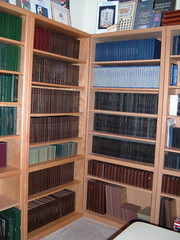
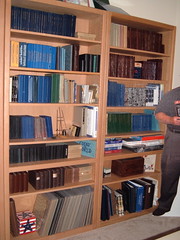
To visit Dave's web site, see: www.coincollectingboards.net
LIBRARY BOOK 99 YEARS OVERDUE
Dennis Tucker writes:
Here's a fun story for any book enthusiast. The book, Facts I Ought to Know About the Government of My Country, can be found for $10 to $15, so by itself it's not a rare treasure. But in my mind the story behind this particular volume definitely warrants it being put in the library's special collection --- or even displayed, as a draw to attract people to visit.
I have plenty of old books in my collection that I bought for a few dollars on eBay or from bookshops. I read them for enjoyment and use them in my research. It's also nice to stop and think: At one point, this was a brand-new book, opened for the first time by someone in a "distant country" (as Dick Doty calls the America of yesteryear), possibly given as a gift on some special occasion, and consumed with relish in an era before radio shows, television, and the ever-present Internet.
 A 75-year-old Mansfield man decided it was high time he returned a book his deceased mother had when she passed away, but he was a little nervous about the fine.
A 75-year-old Mansfield man decided it was high time he returned a book his deceased mother had when she passed away, but he was a little nervous about the fine.
Still, Stanley Dudek brought the volume back to the New Bedford Library anyway, 99 years, seven months and 12 days overdue.
The book, "Facts I Ought to Know about the Government of My Country" indicated it should have been returned to the library on May 2, 1910.
Library staff, however, was thrilled to get the book back and, much to Dudek's relief, waived the fine, saying the volume was now a historical artifact that would be turned over to the curator and likely put in the library's special collection.
To read the complete article, see: Man Returns Library Book 99 Years Overdue (www.thebostonchannel.com/news/21972884/detail.html)
THE BOOK BAZARRE
RAPSUS HIGHLIGHTS NOTABLE ENGRAVED U.S. SILVER DOLLARS
Two notable Seated Liberty silver dollars also bear special engraving. One Gobrecht dollar of 1836 is engraved, "A. Jackson to J.W. McGrath." President Andrew Jackson took an interest in the Gobrecht dollar and its minting; McGrath was a federal judge. Perhaps the President had other dollars engraved and presented to people who were important to him.
Another 1836 Gobrecht dollar, not engraved, was purported to be President Jackson’s personal specimen. The coin, graded from Proof-63 to EF-45 over the years, has been offered at auction, along with a handwritten letter documenting its famous ownership. This coin was offered at a Bowers and Merena auction in 2002 and an American Numismatic Rarities sale the following year, and went unsold on both occasions.
A Carson City dollar of 1870, the first year of production for that mint, was engraved "H.F. Rice to C.C. Warner." Rice was the second superintendent of the Carson City Mint, and Warner was the postmaster of the Virginia City post office. This coin was displayed by Rusty Goe, president of the Carson City Coin Collectors of America, at a meeting of the club on Aug. 21, 2009. Also displayed were two blank planchets, given by Abe Curry, the first Carson City Mint superintendent, to local entrepreneurs, and a specially engraved dollar mounted in a bracelet, given by Curry to friends. Perhaps other Carson City silver dollars were engraved by the superintendent, or another bigwig, and presented to dignitaries.
To read the complete article, see: Engraved 'D' Dollars Mark Historical Event (www.numismaster.com/ta/numis/Article.jsp?ad=article&ArticleId=9029)
BALDWINS TO AUCTION MICHAEL HALL COLLECTION OF RENAISSANCE MEDALS
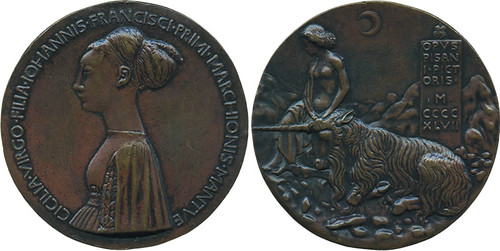
Pisanello’s cast bronze portrait medal of Cecilia Gonzaga
A. H. Baldwin & Sons Ltd are delighted to announce that they have been chosen to auction the extensive collection of Renaissance and later medals formed by the New York connoisseur and fine art collector, Michael Hall. The Michael Hall collection comprises in excess of 2000 items, making it by far the largest sale of Renaissance pieces since the Max and Maurice Rosenheim (Sotheby 1923) and Henry Oppenheimer (Christie’s 1936) sales. The first auction is scheduled for May 2010.
The majority of the collection was formed in the 1960s and ’70s, a period when Hall was living for much of the time in London.
The medals were purchased from the dealers of the day, in London and other European centres, rather than at auction. Over the ensuing years the collection has remained mostly unseen. Michael Hall gifted most of his British medals to the Los Angeles County Museum some years ago, though some important pieces were retained and will be offered in the sales.
The strength of the collection is in early Italian medals, otherwise it remains very comprehensive in the medals of later Italy, France, Germany, the Holy Roman Empire and the Netherlands. There are extensive groups of Papal medals, many of which featured in the 1981 publication Roma Resurgens, Papal Medals from the Age of the Baroque; and a group of Florentine Baroque medals that will be seen as a match to the Lankheit Collection sold by Morton & Eden (May 2003).
To read the complete article, see: Michael Hall Collection of Renaissance Medals Set for Auction (www.coinnews.net/2009/12/14/michael-hall-collection-of-renaissance-medals-set-for-auction/)
BRITAIN TO END CHECK WRITING AFTER 300 YEARS
After more than three centuries, the humble check is set to become a historic relic after British banks voted to phase it out in favor of more modern payment methods.
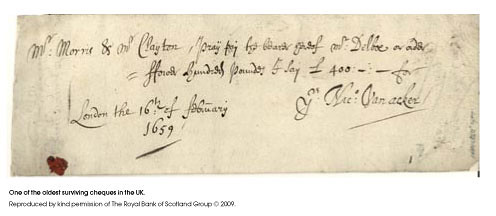
The board of the UK Payments Council, the body for setting payment strategy in Britain, agreed on Wednesday to set a target date of October 31, 2018 for winding up the check clearing system. The board is largely made up of Britain's leading banks.
"There are many more efficient ways of making payments than by paper in the 21st century, and the time is ripe for the economy as a whole to reap the benefits of its replacement," Paul Smee, the council chief executive, said in a statement.
The use of checks has fallen drastically in the past 10 years as more consumers transfer money electronically, by direct debit or with debit and credit cards. Last year, around 3.8 million checks were written every day in Britain, compared to a peak of 10.9 million in 1990, the council said.
It costs about one pound to process every check.
"The next generation probably won't even have a checkbook," said Addy Frederick, a spokeswoman at the payments council.
The council said checks would be phased out gradually, making sure consumers had access to user-friendly alternatives and that the needs of elderly and vulnerable groups were met. A review will take place in 2016 before checks are finally abolished.
The Federation of Small Businesses said it was disappointed by the decision. "It's something that's going to impact heavily on small businesses and their customers," said spokeswoman Sophie Kummer.
Checks have all but disappeared in high-tech countries like Sweden and Norway and their use is under review in Ireland, South Africa and Australia, Frederick at the council said.
The oldest surviving check in Britain was written in 1659, according to the council and made out for 400 pounds (equivalent to around 42,000 pounds today). It was signed by Nicholas Vanacker, made payable to a Mr Delboe and drawn on Messrs Morris and Clayton, scriveners and bankers of the City of London.
In those days, checks would have been exchanged informally in coffee houses. It was not until 1833 that the first clearing house was built in London to exchange checks.
That's an historic decision. How long will it be until the U.S. follows suit?
To read the complete article, see: Britain Ends Check Writing After 300 Years (newsmax.com/Newsfront/britain-checks-electronicpayment/2009/12/16/id/343513)
CHINESE COUNTERFEITS FIND THEIR WAY INTO DONATION KETTLE
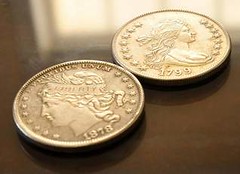 Bell ringers recently discovered two potentially rare coins -- a 1799 Draped Bust, Heraldic Eagle Dollar and a 1878 Morgan Dollar -- in a Salvation Army red kettle near Berlin.
Bell ringers recently discovered two potentially rare coins -- a 1799 Draped Bust, Heraldic Eagle Dollar and a 1878 Morgan Dollar -- in a Salvation Army red kettle near Berlin.
Capt. Cameron Henderson, the Salisbury Salvation Army branch commander, is hopeful that at least one of the coins will prove to be a hefty donation in this year's annual kettle campaign.
The "generous" donor of either coin is unknown, said Henderson, who has not yet determined the authenticity and value of the silver dollars. So far, he has contacted a couple out-of-state coin collectors by phone to find out more information about them.
"We're very excited," Henderson said.
However, coin dealer Gus Tiso, who analyzed a photo of the coins that appeared in Tuesday's The Daily Times, remains skeptical of the mystery donation. He says identifying authentic coins is extremely difficult for nonexperts.
"If the coins are copies, they're not worth anything," Tiso said. "They're nice to look at, but that's about it."
To read the complete article, see:
Red Kettle rare coins are suspect
(www.delmarvanow.com/article/20091218/NEWS01/912180301
/-1/newsfront2/Red-Kettle-rare-coins-are-suspect)
WAYNE'S NUMISMATIC DIARY FOR DECEMBER 20, 2009
Friday the 18th was a special day on a number of counts. First, it was my son Christopher's 11th birthday, although we'd celebrated as a family with a dinner and cake the night before. My wife was taking the rest of the family up to Pittsburgh for the weekend to visit friends and relatives. This weekend it would be just me and Max the dog.
It being the holiday season, my boss took several of us to lunch. We were working in Old Town Alexandria, VA. We walked to Murphy's Irish Pub. Everyone ordered a beer, so I joined in and had a pint of Guinness. The numismatic part of the day began at 4pm when we all knocked off early and I drove several blocks to Royal Street and rang Bill Eckberg's doorbell.
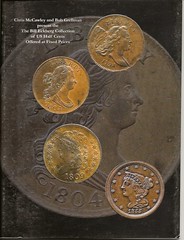 Bill is a longtime Half Cent collector, official of Early American Coppers (EAC), and editor of the EAC's "Region 8" electronic newsletter, another Sunday night numismatic tradition. He and his wife Susan greeted me, and Bill showed me an interesting lithographed print hanging in their hallway. It's a bird's-eye view of Alexandria from 1862 ("during the occupation"). He pointed out some landmarks including the old railroad tunnel and the spot where his house now stands.
Bill is a longtime Half Cent collector, official of Early American Coppers (EAC), and editor of the EAC's "Region 8" electronic newsletter, another Sunday night numismatic tradition. He and his wife Susan greeted me, and Bill showed me an interesting lithographed print hanging in their hallway. It's a bird's-eye view of Alexandria from 1862 ("during the occupation"). He pointed out some landmarks including the old railroad tunnel and the spot where his house now stands.
We walked back to a comfortable room with a bookcase, couch and bar. But before we looked through his numismatic literature, Bill offered me a choice of single-malt scotches. As a collector, I picked the one he told me was a rare edition - only 100 cases made. He poured us glasses, and I took a sip. Smooooth.
We stood in front of the bookcase and Bill handed me a number of books. First, he showed me his complete set of all four different versions of the Goldberg sale of the Dan Holmes collection of U.S. Large Cents (Part 1).
1) a thin, gray-brown cover version showing only the S-79 that was given out to people who looked at lots at EAC 2009,
2) the "regular" catalog with the dark red cover and several coins that everyone on Goldbergs' mailing list got (I got this one as a member of EAC)
3) the spiral-bound version of #2 that was available only at lot viewing at the Goldbergs' office
4) the hard cover version of #s 2 and 3 that was given out at the pre-sale party the night before the auction.
In addition, there was a 6-page supplement to #1 that showed the upgrades Dan Holmes had added to his collection after lot viewing at EAC.
Bill kindly gave me a copy of the McCawley-Grellman fixed price list catalog of his Half Cent collection, the second set he's assembled and sold.
Maybe he'll start on a Large Cent collection next - he showed me an 1810 cent he purchased in the Dan Holmes sale. But he collects more than copper - he also showed me one of the new ultra high-relief Saint-Gaudens double eagle coins from the U.S. Mint. Beautiful!
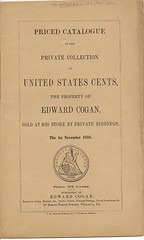 I'd brought with me a binder of Large Cent ephemera from my library. One of my favorite items is Cogan's 1858 list of large cent prices. One little item I somehow had that Bill didn't was a pamphlet titled "About Early American Coppers" published by EAC. I had an extra, and gave one to Bill.
I'd brought with me a binder of Large Cent ephemera from my library. One of my favorite items is Cogan's 1858 list of large cent prices. One little item I somehow had that Bill didn't was a pamphlet titled "About Early American Coppers" published by EAC. I had an extra, and gave one to Bill.
By 5:15 it was time to go already. Bill and Susan had to get ready for dinner and a theater show, and I had to get home through the rush hour traffic to walk Max. I listened to the weather forecasts on the radio. A winter storm was on the way, and now they were predicting 14-20 inches of snow on Saturday. My wife and family would be getting only 3 inches or so up in Pittsburgh - I was the grounds crew on duty at home.
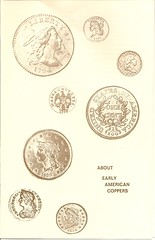 It turned out to be a monster storm. There were six inches on the ground by morning, and it just kept snowing and snowing all day long, sometimes at the rate of two inches an hour. I know we have readers who'll tell us "heck, we get that kind of snow here every day, and twice on Sunday," but I've never seen a storm quite as bad as this.
It turned out to be a monster storm. There were six inches on the ground by morning, and it just kept snowing and snowing all day long, sometimes at the rate of two inches an hour. I know we have readers who'll tell us "heck, we get that kind of snow here every day, and twice on Sunday," but I've never seen a storm quite as bad as this.
When it finally petered out around midnight Saturday, about 22 inches had fallen, making it the worst December storm in D.C. history. I spent it shoveling, doing indoor chores, taking the dog out, and working on The E-Sylum in between. By Sunday morning the sun was out and my neighbors and I shoveled out our driveways. I spent the day wrapping Christmas presents, cleaning more snow from the house and of course, walking Max.
Cabin fever had set in and I went out for lunch to learn that the roads were still pretty bad. But that didn't keep me from going out to a sports bar at 4pm with my neighbor to watch the Pittsburgh Steelers football game against Green Bay. No beer this time, just good food and conversation and a game won by a last-second touchdown and extra point, breaking the team's maddening losing streak. By bedtime I'd completed The E-Sylum and sent if off into the ether for another week.
 Max the dog says, "Happy holidays, everyone!"
Max the dog says, "Happy holidays, everyone!"
MERRY CHRISTMAS!
I'm a big fan of the Coin Rarities Online ads, which sometimes feature a clever coin alteration. Two years ago at this time their ad featured a Pine Tree Shilling with the Pine Tree decorated as a Christmas tree. Below, with permission, is this year's ad from COIN World. QUIZ QUESTION: what coin is depicted?Congrats to Dave Wnuck and John Agre on their classy work, in which "no coins were harmed". They deserve our thanks as well for supporting the Numismatic Bibliomania Society with their ad on our web site.
Dave Wnuck adds:
On our website we have an "ad archive". Collectors can see all of our old ads, and if they click on an ad they can read a little about how we came up with the tag line. Here is the link to the archive: www.coinraritiesonline.com/index.php?page=ad_archive .
Merry Christmas, everyone!
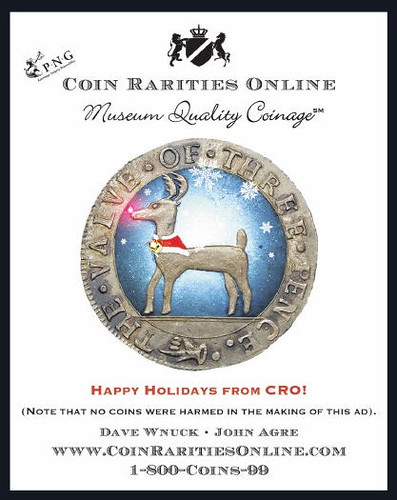
FEATURED WEB SITE: COINS & CURRENCY IN COLONIAL AMERICA EXHIBIT
This week's Featured Web site is Coins & Currency In Colonial America, an online exhibit of the Lasser collection at Colonial Williamsburg. The exhibit was discussed this week on the Colonial Coins Yahoo group.

The money jingling in our pockets and folded in our wallets today literally descended from the coins used in colonial America. Pennies, nickels, dimes, quarters, and dollars didn’t just appear once we declared our independence from Great Britain. These familiar coins have their roots in the vast array of coins that made it to the shores of the New World after 1607 and from the paper notes created when there weren’t enough coins to go around.
www.history.org/history/museums/coinExhibit/

